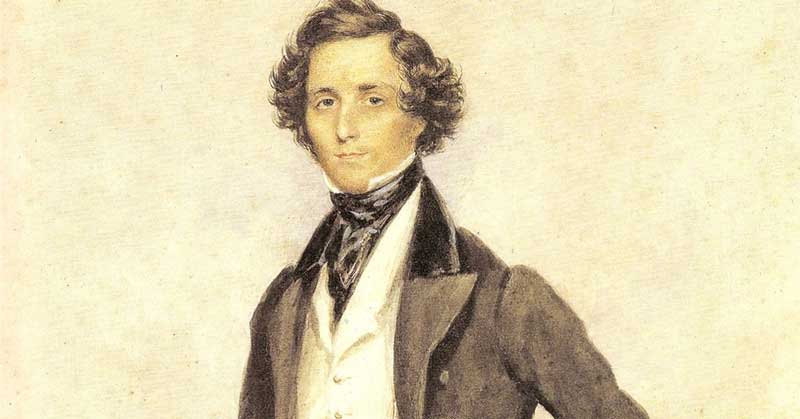Have you ever wondered what it would be like to sit in on a Bethany class? Are you curious about the content and connecting together the name, photo, and classes taught by the professor? Or maybe you would simply like to pause the busyness in your life to learn more about mathematics, music, communication, chemistry, etc.?
Amid the Trees highlights the expertise of our professors at Bethany by inviting you into their classroom and seeing a sample writing of their outstanding work.

1829 portrait of Felix Mendelssohn by J.W. Childe.
Felix Mendelssohn’s Piano Trio No. 1
By Ann Fredrickson, Adjunct Faculty in Music
Felix Mendelssohn (1809-1847) was, by all accounts, a golden boy. Equally adept at composition, piano, and violin, he also excelled at chess, poetry, painting, sports, languages, and philosophy. It didn’t hurt that he was also rich and handsome. Born into a Jewish banking family, Mendelssohn’s father had converted to Christianity (Lutheran!) by the time Felix was born. Mendelssohn and his older sister Fanny were considered prodigies on the level of Nannerl and Wolfgang Amadeus Mozart. In an era when one expects an artist to “suffer,” Mendelssohn lived a happy, albeit short, life. His music is infused with charm, and though he also knew how to imbue darker emotion into music as well, a pervading joy almost always wins out.
Piano Trio No. 1 in D minor, Op. 49 is considered one of Mendelssohn’s best works, especially in the chamber music genre. Written in 1839, he reworked the entire piano part before publication on the advice of Ferdinand Hiller to make it more in keeping with the new romantic style, which also made it far more difficult to play. The work is filled with the melodic lyricism for which Mendelssohn is known, beginning with the opening notes of the cello in the first movement accompanied by syncopation in the piano, but as the violin joins and the theme develops, the piano becomes increasingly virtuosic. The second movement is a tender “song without words,” a trademark type of piano piece for Mendelssohn. The violin and cello join with a gentle singing duet. The scherzo and trio is light and vivacious, with all three instruments tossing the opening motif to each other. There are some moments of Sturm und Drang before the light returns. The Finale is passionate and filled with pianistic virtuosity which the cello tries to interrupt with a lyrical theme, but ultimately the passion prevails.
Mendelssohn was truly one of the greatest composers of all time, and also a happy humble man. Joseph Joachim, the great violin virtuoso, relates this story which illustrates Mendelssohn’s character: Joachim (then only thirteen) was to play the Piano Trio in D minor in England with Mendelssohn at the keyboard in 1844. When they reached the concert room, they found that the piano part was missing. “Never mind,” said Mendelssohn, “put any book on the piano, and someone can turn from time to time, so that I need not look as though I play by heart.” Joachim comments, “Nowadays, when people put so much importance on playing or conducting without book, I think this might be considered a good moral lesson of a great musician’s modesty.”
